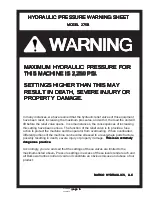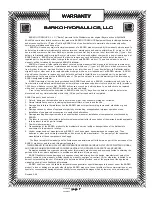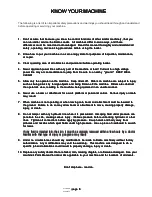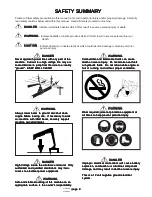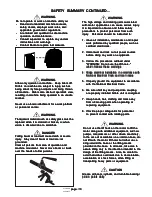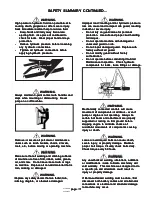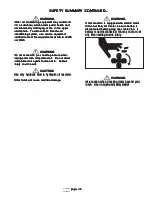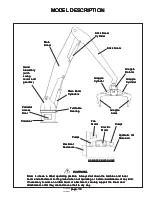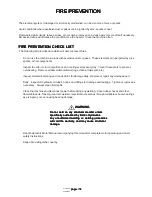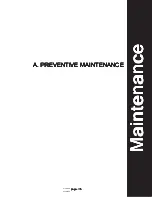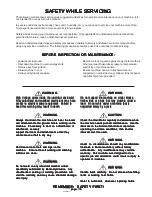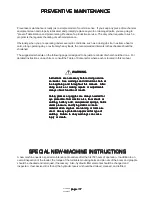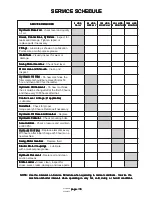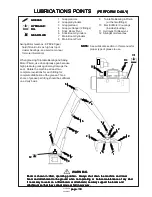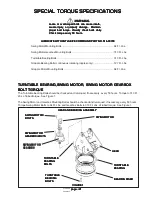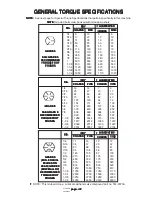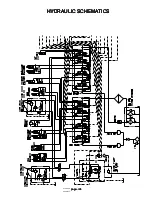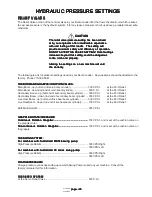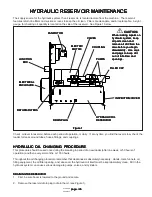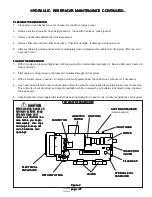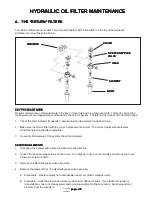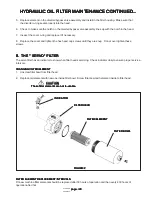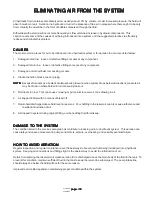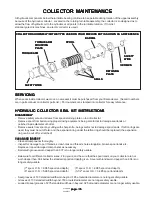
page 20
page 20
page 20
page 20
page 20
275B SER
800-00152
LUBRICANTS
LUBRICANTS
LUBRICANTS
LUBRICANTS
LUBRICANTS
HYDRAULIC OIL
HYDRAULIC OIL
HYDRAULIC OIL
HYDRAULIC OIL
HYDRAULIC OIL
The following lists some features to look for in an oil. The hydraulic oil for the machine should feature:
-
Rust resistant additives to prevent rust formation from moisture condensation.
-
Anti-foaming agents to break up air bubbles and prevent "foaming" that may cause sluggish and
erratic operation.
-
High stability to resist oxidation and prevent varnish formation and deposits that foul systems.
-
Anti-wear properties to prevent scuffing and exccesive wear at high speeds and high pressures.
-
Good viscosity index for easy flow at low temperatures without thinning out at high temperatures after
hours of use.
46
68
ISO Viscosity
Grade
Average
Ambient Temp.
32 degrees F. to 45 degrees F.
ABOVE 45 degrees F.
System Operating Temperature
190 degrees F. Max.
150 degrees F. Max.
Below 32 degrees F. ambient, consult the factory.
For operation in different temperatures, refer to the following chart for selection of hydraulic oil.
WARNING
WARNING
WARNING
WARNING
WARNING
Hydraulic fluid under pressure can penetrate the skin or eyes. Fluid leaks under pressure may not be
Hydraulic fluid under pressure can penetrate the skin or eyes. Fluid leaks under pressure may not be
Hydraulic fluid under pressure can penetrate the skin or eyes. Fluid leaks under pressure may not be
Hydraulic fluid under pressure can penetrate the skin or eyes. Fluid leaks under pressure may not be
Hydraulic fluid under pressure can penetrate the skin or eyes. Fluid leaks under pressure may not be
visible. Use a piece of cardboard or wood to find leaks but do not use bare hand. Wear safety goggles.
visible. Use a piece of cardboard or wood to find leaks but do not use bare hand. Wear safety goggles.
visible. Use a piece of cardboard or wood to find leaks but do not use bare hand. Wear safety goggles.
visible. Use a piece of cardboard or wood to find leaks but do not use bare hand. Wear safety goggles.
visible. Use a piece of cardboard or wood to find leaks but do not use bare hand. Wear safety goggles.
If fluid enters skin or eyes, get immediate medical attention.
If fluid enters skin or eyes, get immediate medical attention.
If fluid enters skin or eyes, get immediate medical attention.
If fluid enters skin or eyes, get immediate medical attention.
If fluid enters skin or eyes, get immediate medical attention.
ALTERNATIVE LUBRICANTS
ALTERNATIVE LUBRICANTS
ALTERNATIVE LUBRICANTS
ALTERNATIVE LUBRICANTS
ALTERNATIVE LUBRICANTS
Conditions in certain geographical areas may require special lubricants and lubrication practices which do not
appear in this manual.
LUBRICANT STORAGE
LUBRICANT STORAGE
LUBRICANT STORAGE
LUBRICANT STORAGE
LUBRICANT STORAGE
The machine can operate at top efficiency only if clean lubricants are used. Use a clean container to handle all
lubricants. Store them in an area protected from dust, moisture, and other contaminants. Store drums on
sides.
GREASE
GREASE
GREASE
GREASE
GREASE
Use grease shown on chart below, depending on the expected air temperature range.
AIR TEMPERATURE RANGE
AIR TEMPERATURE RANGE
AIR TEMPERATURE RANGE
AIR TEMPERATURE RANGE
AIR TEMPERATURE RANGE
Fahrenheit ( F )
Fahrenheit ( F )
Fahrenheit ( F )
Fahrenheit ( F )
Fahrenheit ( F )
-67
-40
-22
-4
14
32
50
68
86
104 122
Celsius ( C )
Celsius ( C )
Celsius ( C )
Celsius ( C )
Celsius ( C )
-55
-40
-30
-20
-10
0
10
20
30
40
50
HIGH TEMP. /EP
HIGH TEMP. /EP
HIGH TEMP. /EP
HIGH TEMP. /EP
HIGH TEMP. /EP
NLGI O OR I
NLGI O OR I
NLGI O OR I
NLGI O OR I
NLGI O OR I
ARCTIC GREASE
ARCTIC GREASE
ARCTIC GREASE
ARCTIC GREASE
ARCTIC GREASE
NLGI NO. 2
NLGI NO. 2
NLGI NO. 2
NLGI NO. 2
NLGI NO. 2

